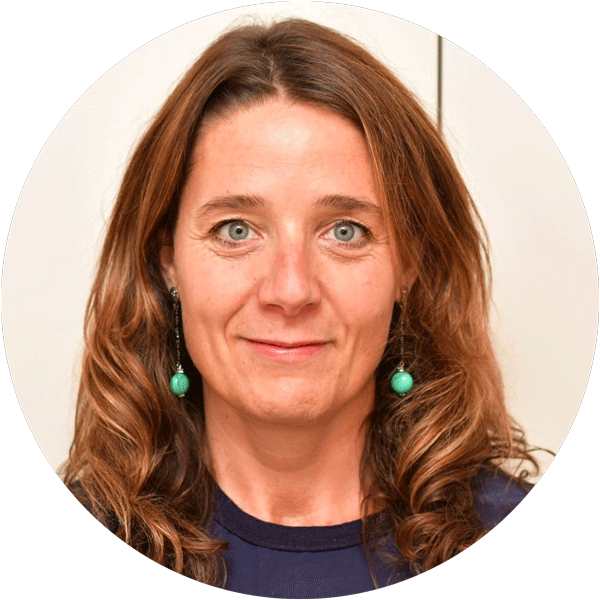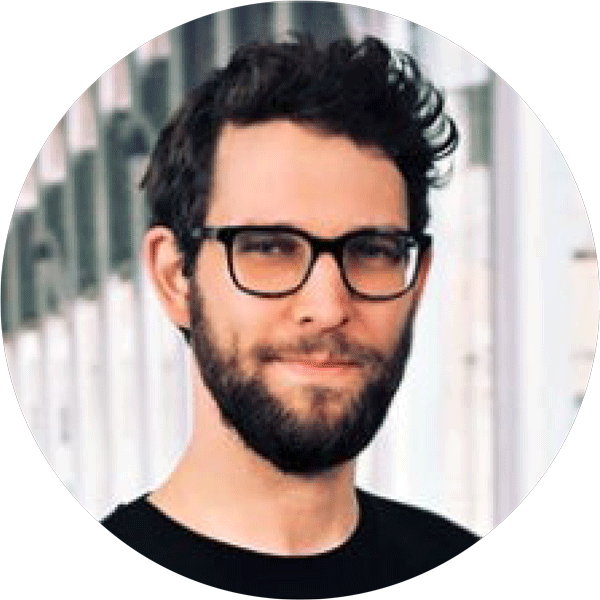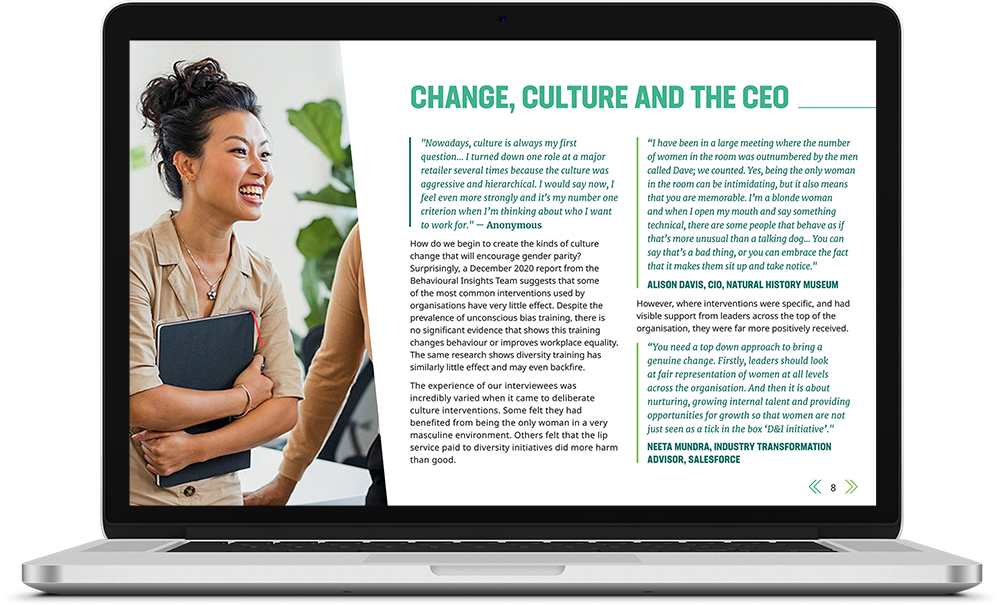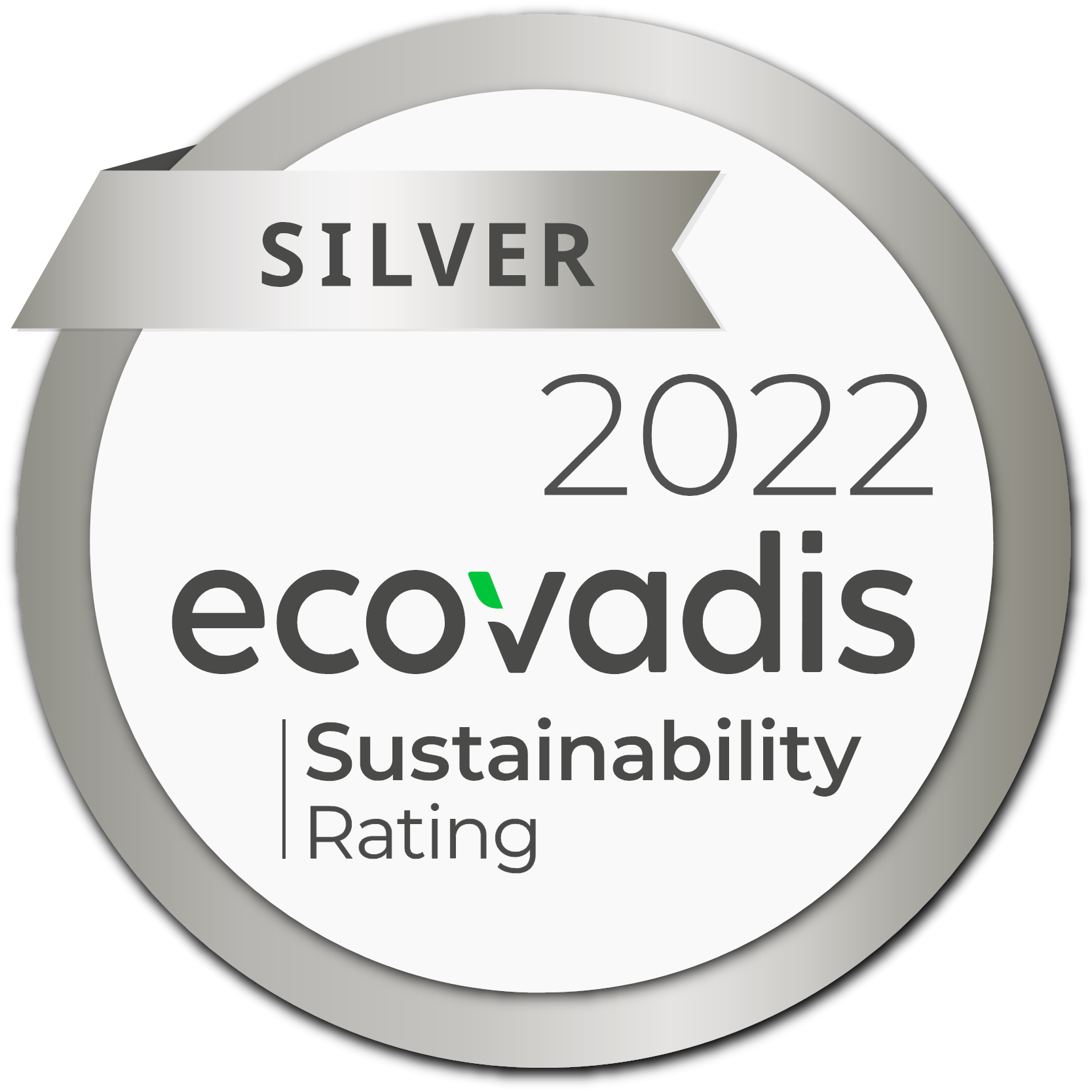Tech’s Leading Women
A video podcast series on lessons in gender, culture, and building an inclusive workplace.

Episode two
Are we looking in the right place for talent?
Who works in the tech industry and how can we make it more inclusive? In this episode, our panel looks at how we can attract people from more varied backgrounds into the tech sector and how we can work together to tackle the chronic digital skills shortage globally.
Nabila: Welcome to Tech’s Leading Women, a video podcast series on lessons in gender, culture, and building an inclusive workplace. I’m Nabila Salem, and I’ll be moderating our talk today. I’m the President of Revolent, a leading cloud talent creation company that is part of Tenth Revolution Group. At Revolent, we’re passionate about fuelling the Salesforce and AWS ecosystems with the next generation of cloud professionals and providing new talent to businesses around the world.
This new vodcast series was inspired by a whitepaper we published in 2020, profiling some of the key issues facing women in the tech industry. And since releasing this paper, the world has dramatically changed as a result of the pandemic. And we wanted to delve further into the impact of some of these trends.
In today’s panel discussion, we’re asking: are we looking in the right place for talent? Our whitepaper showed there is no typical route into technology and just under half of the CIOs and CTOs that we interviewed had no formal qualifications in any STEM subject for that matter. Plus, over half of the women we spoke to chose tech as their plan B career. Despite this, most organisations still insist on tech qualifications when recruiting, and this undoubtedly ignores an array of candidates with sought-after transferable skills and that really important raw talent.
So, this begs the question, can we collectively do more to solve the digital skills shortage that we know exists globally by helping people from more diverse backgrounds break into the industry and make it more inclusive for everyone?
I’m joined by three respected figures from the tech world who will each share their unique insights on this topic. Let me introduce you to them.
Stuart Mills is the Vice President of Trailhead & Ecosystems at Salesforce, and he’s passionate about placing diversity and equity at the heart of workforce development.
We also have Barbara Gottardi, welcome Barbara. She’s an experienced CIO and non-executive director with more than 20 years of experience in financial services. Barbara is an expert in building high-performing global teams.
And completing our line-up is Olli Wynyard Gonfond from PwC’s Indigenous Consulting. He designs experiences with First Nations people and communities helping them to get excited about technology and drive innovation. Revolent is partnering with PWC Indigenous Consulting, and I’m delighted to see you here today Olly.
Thank you everyone for joining this podcast. I think it’s going to be a thought-provoking one for our audience. So let’s get started straight away and launch into our first question. I’d like to begin with some myth-busting. So what are the most common misconceptions you’ve come across relating to who or what a person is like that should be working in tech?
Stuart: Goodness, Nabila, that is one of those where to start with that list, right? I mean, I sort of, I suppose, sadly, that people look like me I think that’s the first myth should be broken down. What I mean is a sort of white men is a myth. And as you and I know, I mean, that’s just not true. This is incredible diversity in technology, it needs to improve and increase, absolutely. But I think that will be the first myth I want to get rid of is that it matters that you look like anything, in fact, and that you’ve come from any background as well. I think that’s the other piece that I discover in my work is very much that people can come from any background, philosophy degrees, as much as computer science degrees are really important.
Olli: Yeah, I absolutely agree with that Stuart. And I think for me, I thought that there are a lot of misconceptions about the type of person that’s right for tech, and unfortunately, a lot of misconceptions also about what diversity and inclusion really means and how it becomes a reality in our workplaces. And in my experience, those sort of misconceptions come from really deep-seated misunderstandings. I don’t believe that people get out of bed with a mission for misogyny or racism every morning, but their lack of exposure, their lack of awareness, their lack of cultural safety means that their ignorances can have real and damaging sort of effects on the people that are trying to make it into this industry.
Barbara: I agree. And I think if I can add just one thing, I think technology has really changed. And I think I’ve had a couple of coffee with girls and students trying to convince more girls to go into STEM. And they think they quite like the idea, but they don’t want to stay in front of the computer and code all day. And I think that’s what has really changed in technology. It is no longer just someone in a room and code, but it’s much bigger than that. And if you think of all the transformation projects that we’re doing in many organisations, the key to success is actually having a cross-functional team where business and technology become just one team, serving a customer. And I think that’s the real difference. So the skills, I think, are evolving and they’re very different. And I think not being just a coder to focus on the latest cool technology becomes an advantage because that’s not necessarily what the customers really want. And I think diversity is the beauty of what we can bring.
Olli: Yeah, and I completely agree. And it’s not just the misconceptions about what the kind of person that is right for tech is, but the misconceptions about the industry as well. I mean, there are, so as an Aboriginal man, I have a limited capability or lived experience to speak about the underrepresented of women in tech, for example, but other people from a different cultural identity, some of the struggles that they experience we’ve recently been working with Revolent and Salesforce to start an Indigenous Technology Academy for young Aboriginal and Torres Strait Islander students in Australia to get into the tech industry. And we called up a young man who was interested the other day, and he was really excited about the opportunity, but had decided not to apply because he had assumed that he would be working seven days a week and we sort of have to say to him, “Mate, none of us want to work seven days a week. Don’t worry about that. You will not be, that’s not an expectation.” But that sort of misconception of the industry really talks to the lack of visibility, the lack of accessibility for so many people who are underrepresented within the industry, the way that they have seen it represented through media, through, yeah, that kind of their lens that they have is really a clouded view, I suppose.
Nabila: Absolutely, I couldn’t agree more. I think, many of us, well, many people still have a narrow view of who can work in tech, who should be working in tech, and what people should look like when actually tech is the fastest-growing industry in the world. And we need everyone with all skills from all backgrounds. And these misconceptions you touched upon it Olli, but I wonder whether we can expand a bit more on, in your opinion, do the misconceptions originate from people already working in the industry like us, or is it more externally, people who are put off by working in the industry?
Olli: That’s a great question. My personal experience, I suppose, would be that it comes from both angles. I think that it can be a little bit of a self-fulfilling prophecy sometimes. And it sounds like a good thing, but it’s a positive feedback cycle that it’s not a good thing that we get one sort of person or one type of person into a role or an industry. And it kind of becomes the societal norm, I guess. But definitely, I don’t think that those misconceptions that helped more broadly throughout our international discourse on cultural identity and race and gender and those sorts of disparities.
Barbara: And I think maybe is always like journalism, right? The headlines is, there’s not enough women in tech, and tech is going to be an old boys’ club and that’s what makes the news. And I think we need to change that misconception because there’s a lot of really good examples where they’re really good men and really people that are trying to make a difference and being really inclusive, not just women and female, but if you think of newer diversity or social mobility and all of that, and there are so many great stories. So I do think as leaders in technology and organisations, we need to start voicing the good stories. And I think Nabila, you are doing a really good job, even on LinkedIn and what you do. And I think we all together need to try and join up and voice these good stories and give these people, I think, these role models, then people start to identify themselves with people that are not the typical or the stereotype of their IT person. And I think that’s how we draw change.
Nabila: I agree, completely, yeah. So Stuart, do you have anything to add?
Stuart: Yes, I mean, I think the frame of myth busting’s really great for this actually, and one of them is, we use this phrase a lot that you can’t be what you can’t see. And then, I think that’s particularly acute here where you sort of need to sort of make more of the images, the stories of people who have been successful or have even just pathways through a number of careers. We’ve got, you don’t need to be a senior executive to be a role model and an example to others to follow. And I know in my work and in our work together, in fact, we do a lot of things where we’re trying to find examples of people who’ve pathwayed and driven the way through so that others can sort of follow that path and go for it, then that story continues to evolve and change. So, and I think that role models piece, and I suppose I don’t always ask people, actually, if you’ve made some success, then look behind you to the next person coming through and make sure you give them a hand up because they probably need it. I needed it, I still need it. I’m sure we all do.
Nabila: That’s great Stuart. And, I can relate to that as well. I think, we all have a duty to send the elevator back down, as you said, if we’ve been successful, we have a duty to help others, and it’s not just people from our own gender or ethnicity, but it’s all types of diversity. At the company I used to work for, I was the youngest, I was the first female VP. I was the only VP from a minority ethnic background. And it can be very lonely to be the only one. So I completely agree that we must help others progress if we have been lucky enough to get there ourselves. So I think we all agree that basically, we need to be encouraging a lot of different types of people into the tech sector. So with that said, what skills and perspectives do you think would add real value to our industry?
Olli: That’s actually a great question.
Stuart: Shall I?
Olli: Go ahead Stuart.
Stuart: I was going to say, should I selfishly start that sort of with a Trailhead brand but no, it’s a super question Nabila, is that, I mean, I like talking about this because I think that there’s a piece of this, which is the technical skills, right? Knowing a technology like Salesforce is important to it, but actually, it’s a broader set of things that we need. There’s some sort of basic awareness of what technology is for in the world, what’s its benefit. And I think a lot of people need, a little bit more coaching as to how sort of things can help human beings be better at what they might be doing or so on so. There’s a piece of that, technology skills, but then I call them power skills. I think we call them soft skills, others call them hard, tough skills. And it’s the things like communicating, design work, creativity, understanding why do you want to build something in a certain way? So those sorts of things. And then there is a bit of the skill to be hands-on with technology. So sometimes technology like Salesforce can be a bit scary because it’s in the cloud and it’s a bit foreign, but you have to just try it. You have to get your hands into it and start to type and draw and so on and so forth. I think sometimes the people don’t think of that skill to actually just get involved with something a bit and helping people with that just go on with it. Most technology you can’t break now. I mean, you used to be able to really break code. With the cloud, it’s very unlikely, you’re going to break Salesforce. People do try, but generally, you can’t do that. There’s a lot of protection there. So you are innovating on top of something that’s secure and trusted. So, that sort of, so I always think of, I love Lego and I always think it’s get play, play with stuff, but that takes skill actually, ’cause not everybody’s good at play funny enough, said so. Olli, I apologise, I jumped over you.
Olli: No, not at all. I think that’s a wonderful perspective to have, and I mean, the value that comes from diversity, it’s quite simply not replicable in any other way, is it? And it is just, it’s a bit of a nonstarter really. I mean, everything from anecdotal and grey literature through the academic and scientific study, it all talks to the benefits of having that diverse team. And I mean, I can certainly speak to that from my experience in my current team and at previous employers like Apple, where they try as hard as they can to make technology that cannot really be broken and sort of introducing that technology to people that are new to introducing any technology today, to people that are new to it, there’s still a sort of tentative sort of approach, I suppose. And I think that the more that technology becomes accessible and available to people, the less scary it can be and sort of the more willing that people can become to play, to experiment, to become part of it, not just a passive sort of stand by or consumer. Not that there’s anything wrong with that necessarily, but really to become engaged with it, yeah. The thing that I was going to say about that sort of more creative thinking as you said, and more sort of diverse client connections and better business opportunities and outcomes, and all of the things that come from diversity is that these things are not just elements that benefit women in technology or minorities in technology, or people from a different cultural identity or socioeconomic background, or these changes benefit us all. And every person who wants to live in a certain place, every person who has different familial responsibilities, all of us, it isn’t a minority thing or a female thing, it’s an everyone thing. And it’s about breaking down those systemic and organisational structures and systems, which for so long have dictated the kind of people that sort of work in this industry, I suppose.
Nabila: Absolutely. I think about this often, and I think from where we were, I think we’ve come a long way. A lot of companies nowadays openly talk about the fact they want to attract more diversity, they want to be more inclusive, they want underrepresented people to join them. But the question I get all the time is how? What strategies and messages work from your experience? Because obviously, you’re all doing some great work in this space.
Barbara: Maybe shall I start with that. I think the message has to be meant. It’s easy to say, I want to increase my diversity, the company’s focusing on care and diversity, but if you don’t live by the values, you’re going to get found out very soon. I think if you sit in a leadership team, Exco team, whatever you call it at the top of the organisation. I’m sure all of you have been in a situation where someone wants to drive their diversity and inclusion stream because there’s going to look good on them, but they haven’t got a clue why they should be doing that. And that will never work. I think, in my experience, it’s not something that one person can do. I think it’s a thing that one person can drive if strongly understand, then believe that that’s the right thing to do. But then you need to really encourage and empower every single person in the organisation to do, to make a difference. And I think that’s the only way things can change. One of my examples, when I decided to put my hand up to drive diversity and inclusion, my first meeting was awful, absolutely awful. I got totally annihilated by negative comments and people wanted to have a real whinge about it. Then nothing happened. I felt a minority and all of that. I called it their therapy session and I hope people got it out of the system. And that could be a clean start, but my message to them was if you expect me to change and to make all of this, then you should leave now, ’cause that’s never going to happen. If you want to help me to make a difference then you have idea, no matter how small it is, and you can kind of help me with the power of snowballing, if you want the small things that can be, then I think we can make a start. And I think the new act is a mini role model to someone else, and that’s how you trigger the difference. So I’m very convinced of that.
Olli: I love that. Speaking of horror stories, I suppose, which is I don’t want to kind of get down too far down that path, but there’s a lot of horror stories for many First Nations Australians who are trying to break into an industry through, in Australia it’s called an identified role. It’s basically a procurement target. And there’s a great diversity that exists in the Aboriginal and Torres Strait Islander community, and Australia has more than 250 language groups with very distinct cultural backgrounds and histories and traditions. And unfortunately also intergenerational traumas, but some of the stories that I’ve heard of people going to a role that is foreign, set aside for an indigenous person somewhere that should feel like a really culturally safe space to interview and should be excited about joining a business, that exactly, as you said, Barbara is aligned and living the values and really excited, and then they might be someone who’s more fair-skinned like me. They go to the appointment and had the interviewer be vocally disappointed that they weren’t “more black”, ’cause it’s like, what’s the point of us having a target for Aboriginal people, if it doesn’t look like we’ve got Aboriginal people sort of thing, like it’s a very narrow-minded view of why you’re doing those things, right. Why you’re taking those steps, and putting the effort into that initiative. And I think it’s because it is really hard and to hear about an experience such as yours, where you had to battle to make that happen, it gives me goosebumps. It’s amazing.
Nabila: Thanks Olli, that’s a great point that you made there. I think, often when people think of diversity, they think of diversity in what can be seen, but actually diversity is much more than that. It’s also, what can’t be seen, it’s social mobility, it’s diversity of thought, it’s experiences and so much more. And this is a topic that we could talk about forever because we’re all so passionate about it. And with that in mind, I think let’s move into the next question, which is, I’m thinking if we want more people to consider a career in tech, right. As leaders, as people that have been there, I’m not technical, but I work in tech, what does that journey look like? Where can they kickstart that journey? What resources and networks would you recommend? Stuart, would you like to take that?
Stuart: Yeah, so instead sort of what networks, I mean, I think sort of in some ways it’s the closest to home that are the places I’d start with. I think in a sense of, I enjoy visiting my children’s school and talking a little bit about technology in the context of their day, and some of the later years, my children are teenagers at the moment, but they’re sort of nearly at the end of school. So starting their university connections and things like that. But I suppose the point there is those old connections, perhaps if you’ve been working for a while, that you might not have gone back to will be a place to set some tones. Salesforce talks a lot about employee resource groups in the context of different minority groups, particularly, and sort of trying to really think through networks of people, for example, black, Asian minorities within the UK and all over the world and Indigenous, let you talk to. I think, all of those different communities, women in technology, big community at Salesforce, and then it’s just saying, well, yes, within Salesforce, that community and that network. And then how does that adjacency move? And then I think I’d almost think of the network of thinking, how can we create programmes that bring people together from different communities of people? So potentially some of the work that we do together, for example, where we do a focused programme that might be on a particular community or network and bring them into a classroom and show them the pathways through it. So, I think it’s sort of everything, but it is sort of be focused and bring to life what it’s like to work in technology.
Barbara: And maybe I think, Nabila what, the way and the path that we’ve gone through to go into technology. I think it’ll be evolving continuously, and be very different for our kids and the young generation. Most of them come up, there are already, they’re both from, within two years of their life, they know how to activate an iPad and scroll an iPhone and do those things. And at school, I mean, I’m quite impressed with the level of coding and things that they do already. So I think they will be born with a much more tech-savvy and ideal technology than we’ve never had. I think what they will need to learn probably is how, and I think, Stuart you said that, how do you work together as a group, as a team? And how do you put technology to the right use for the customers? I think we said it before, but technology’s great, but technology’s also lethal. We’ve seen a lot of cyber issues or technology used in a completely wrong way and can affect mental illness. Look at Instagram for kids as well, could be good and could be terrible. So I think what they’ll really need to learn is not much the use of technology, but the good use of technology and actually being able to identify how that can really help people’s life. So I think there’s a lot way to get into technology and pretty much everything will be in technology. I think that challenge will be hard to put that to a good use, I’d say.
Olli: Those are both such wonderful answers. I don’t really know that there’s much more that I can kind of contribute to that. I think that really, for me, my perspective kind of comes from my own experiences, growing up in the country and technology companies during that period that I had heard of were Microsoft and Apple basically. And now we have a whole layer of technology that exists below the surface. It’s not sort of as visible and as much as I would love to be able to say, head to this website or listen to this podcast and understand this technology. Ultimately, I think the responsibility does return back to us to reach out into those communities and into those places where the visibility and the accessibility isn’t great. Yeah, I think that, all of the people on this call have spoken really eloquently about how they do that already and how we all need to continue to do that. And I would echo that definitely.
Stuart: It’s interesting Olly, I was out on the West Coast of Scotland a couple of months ago, in a small island, which is about an hour outside of Glasgow and had the opportunity to speak with a local community group, which had a real wide range of ages from people who’ve been on the island for all of their lives and were in their late 60s, through to some sort of early 20s and asked the question, do you know that you could do a technology job from here?
Olli: Yeah.
Stuart: Today, and it’s that sense that you can do these jobs from anywhere, which I think is a really impactful kind of message. And it was really interesting sort of having this conversation and sort of seeing that actually, if I could travel to that place and just say a few things, then I’ve opened up a little window for that community, which was amazingly diverse. I mean, the people in the room were, I think you must have been about 50, 50 men and women. There were some refugees on the islands, saw people from all sorts of different parts of the world. So, I think, gosh, getting to that point and then just opening a little window, such a powerful thing to give that example and because truly, I think you can work from anywhere today. And that should mean not just physically space, but of course, anywhere as in your background, your sexuality, et cetera, et cetera, et cetera. And it was quite a powerful experience for me. I was sort of, gosh, you know what, if I could just get, and it’s obviously difficult to travel right now. So that was quite lucky, but we need to do that.
Olli: I love that so much Stuart, and it spreads like wildfire through those communities, right? Like you have, it sounded like actually quite a large group, but it can start with such a small little seed of conversation and information. And then it kind of, yeah, it extrapolates outwards and it permeates that into the broader community. And before, you know it you’re getting interest from all these different sorts of places that potentially that one conversation, if it hadn’t happened, those people would never know the possibility or the options. Yeah, that’s amazing. Sounds really special.
Nabila: It’s that light bulb moment, I think, only where people realise, and it’s so fantastic when we can witness that. People realise that actually they hadn’t thought that it was for them, and that they can also do it. And I think that is such an important moment. And if we, as leaders can ever influence that, that is the way in my opinion, to change the world. There’s no, everyone says they want to change the world. How do we change the world? Well, by changing someone’s life. If we can change one person’s life, I think we’ve done a very good job. And if everyone did that, we would change the world together.
Great points everyone. And thank you for sharing your perspectives and your advice. It’s clear to me that we all agree that tech would benefit from more diversity of experiences and backgrounds, and it would certainly help us close the skills gap faster, which we definitely need in our industry. It’s not so much that we are looking in the wrong places. Employers just seem to be fishing in a very small pond. Well, so what we need to do is make the pond bigger, cast the net wider in order to attract talent from further afield.
And before we conclude, I’d like to take a moment to recap some of my key takeaways. So one, there seems to be no one type of tech professional. That’s definitely a myth. The tech industry requires people with lots of different skills from lots of different backgrounds and experiences. So diversity is really, really important for creativity and innovation.
Secondly, as a takeaway, role models are hugely important. As the saying goes and I’m sure we’ve all heard it, is you can’t be what you can’t see. And what we have a duty to do as leaders is to encourage the next generation and everyone out there that they can be whatever they want to be.
Finally, as a key takeaway, I think as leaders, we have to lead with our values and as businesses we have to, if we want diversity and inclusion, this has to be led from the top, but it’s no one person’s job. In order to attract diversity, we have to be inclusive and this is everyone’s job. So we need to provide the building blocks and the support and the encouragement, the knowledge and the tools that people need in order to be more inclusive so that we can attract that all-important diversity that we so desperately need in our industry.
We do encourage you to like, and share this episode and also keep an eye out for the rest of the episodes and the series where we’ll be delving into further topics around gender, culture and building an inclusive workplace. Thanks again.
Meet our panel
Moderator

Nabila Salem, Revolent
Nabila Salem is the President of Revolent, the sister division to global staffing firm Frank Recruitment Group, which specializes in cloud talent creation. She has 15 years of leadership and was recognized in Management Today’s 35 Women Under 35 List 2019.
Guests

Stuart Mills, Trailhead

Barbara Gottardi, WEDLVR
Barbara Gottardi is the CEO of technology and digital consultancy, WEDLVR. With more than 20 years’ experience in financial services, Barbara is an expert in building high-performing global teams.

Olli Wynyard Gonfond, PwC
About Tech’s Leading Women
Tech’s Leading Women is a vodcast series inspired by a recent whitepaper published by Frank Recruitment Group, spotlighting some of the key issues facing women in the tech industry today.
In each episode, we explore a different topic in more depth, with unique insights and opinions from inspirational thought leaders across the tech world.



